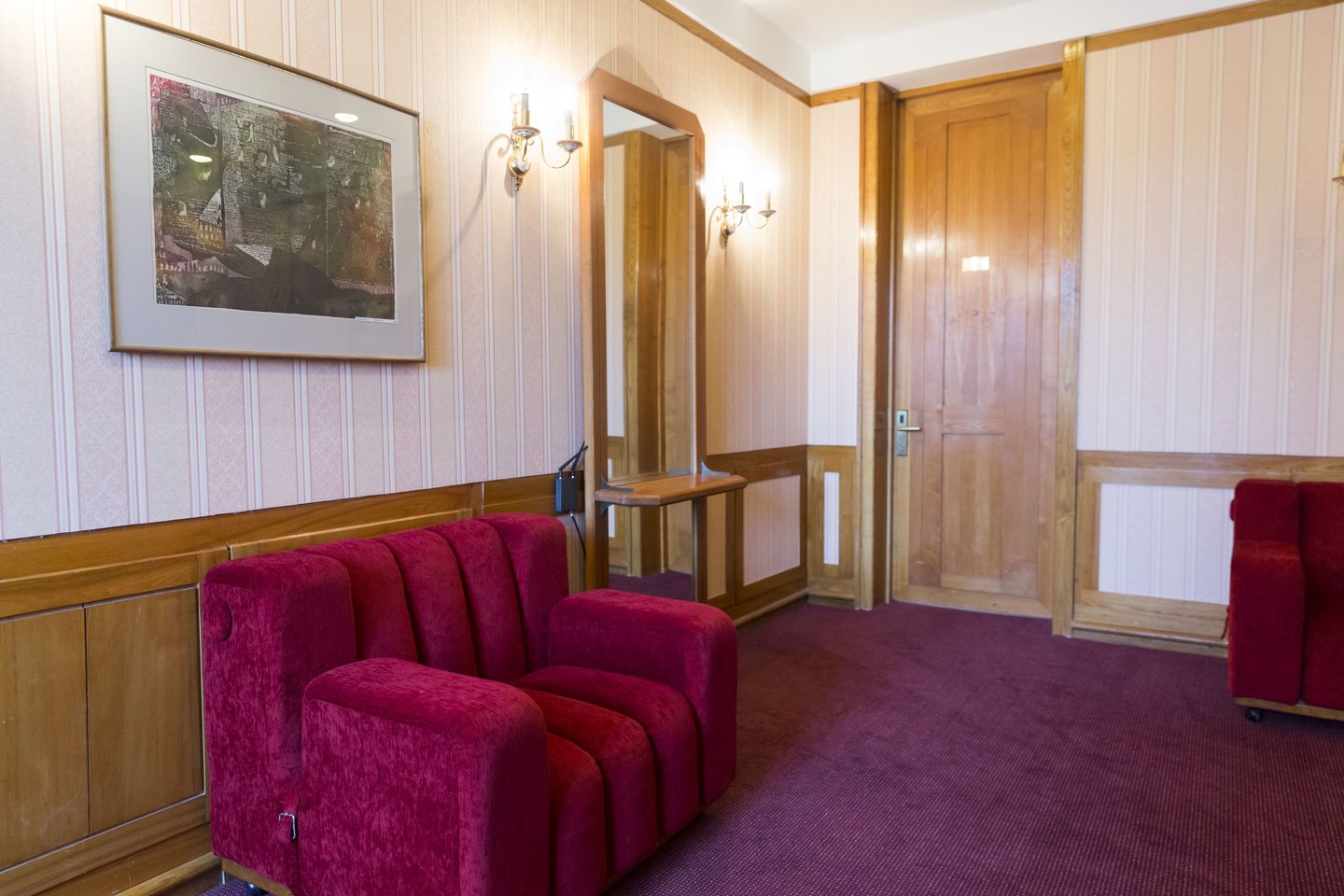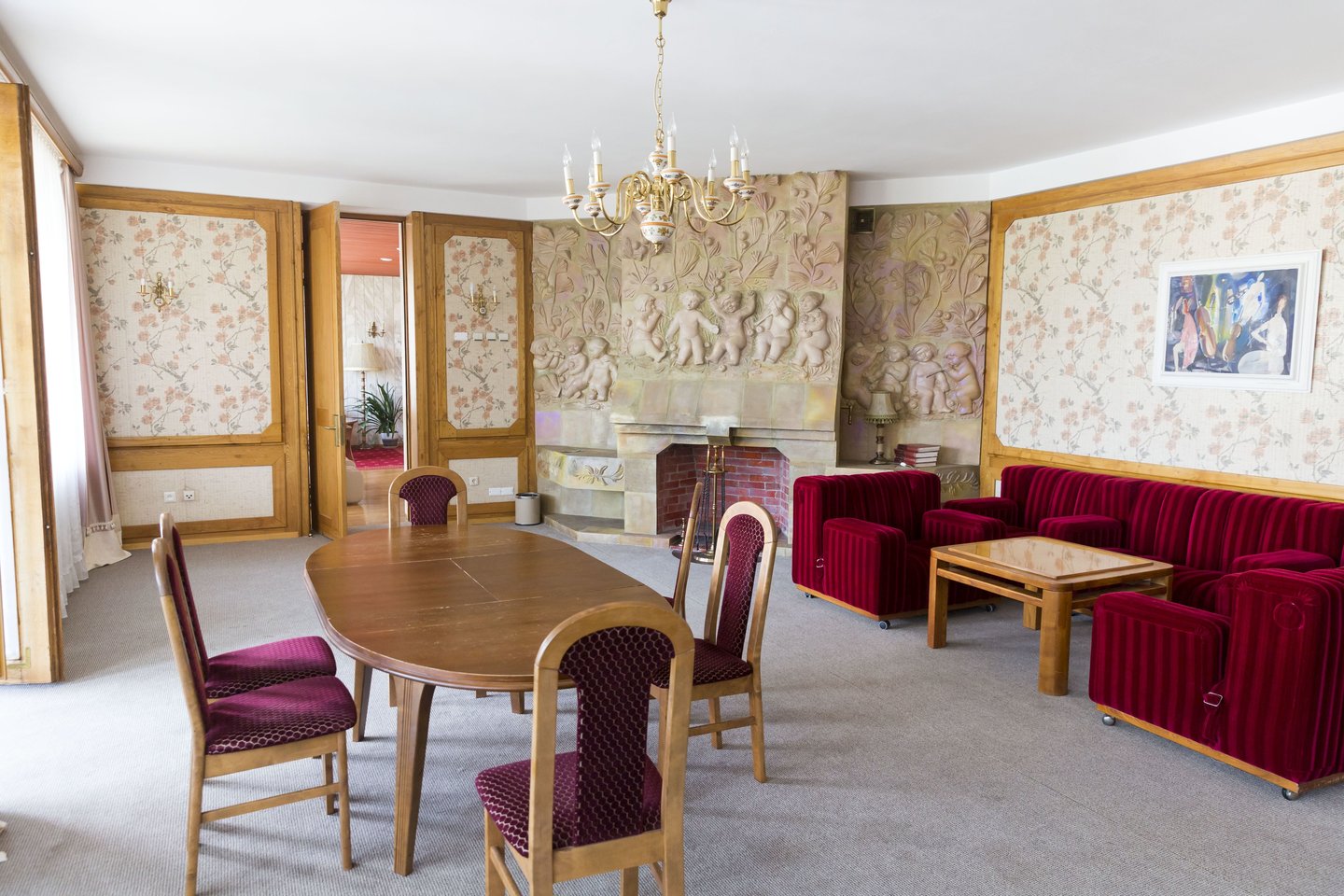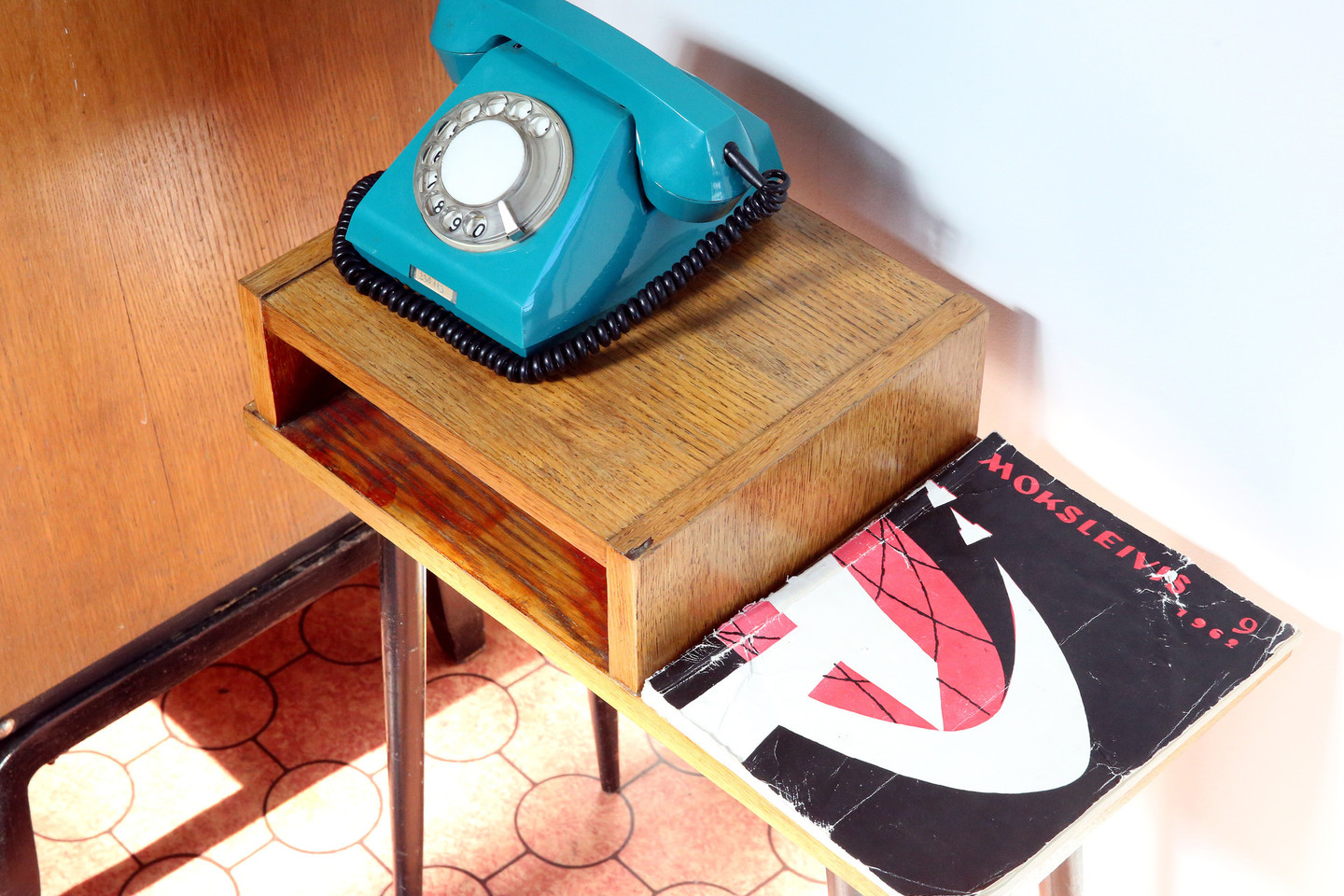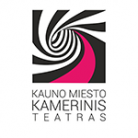Juozapas Blažiūnas, a researcher of design in Soviet Lithuania, says: even the domestic can be used to judge the traumas of society
2022-11-11

Juozapas Blažiūnas, a researcher of design in Soviet Lithuania, says: even the domestic can be used to judge the traumas of society
The Soviet period is shrouded in myths – some see it as dark and gloomy, and others look back on it with nostalgia. Similar reactions are expressed when talking about the architecture, monumental buildings, and monuments of the time. Today’s society would like to see fewer of these signs, but some voices are holding back this natural cleansing process. Juozapas Blažiūnas, Ph.D. in Art Theory, Director of the Lithuanian Archive of Literature and Art and Associate Professor at the Faculty of Communication of Vilnius University, is convinced that this is a consequence of the trauma he suffered. “It’s hard to comprehend how much this has penetrated our lives… Those who were born and raised in Soviet times are traumatized. Frankly speaking, if you were a citizen and resident of the Soviet Union, you used the household things of that time, you grew up in it – it is difficult to reorient yourself”, – J. Blažiūnas, one of the speakers of the International Design Networking Forum, organized by Kaunas 2022, which took place on 14 October this year in the amphitheater of the Žalgiris Arena in Kaunas, shared his insights.
From whom and to whom do we come?
To better understand Soviet thinking, J. Blažiūnas drew a picture of the everyday life of that time. “Imagine you grew up in a small, dingy apartment with low ceilings, where you could hear all the neighbourneighborshe wall. There’s no possibility of getting a bigger place, you live here with your whole family, and eventually, your children and their children move in. One bath, with a queue, lined up in front of it. No electrician, no plumber… You do everything yourself. Of course, everything could be obtained through acquaintances, or if not, quietly and quietly appropriated (nowadays, this is considered theft). It was a mass phenomenon: whoever worked in the factories traded in their products. You see where we are coming from and where we are going”, he said. According to Blažiūnas, all those who could create something in independent Lithuania had lived, worked, and graduated in various foreign countries, mainly in France and Italy. “At the end of the Second World War, many of them (about 80%) left. There were a few who stayed behind to please the Soviet regime. The towns were emptied – deportations and all sorts of things… People from the villages flocked to the cities, just because jobs were created there. This was even encouraged. Everybody had to be accommodated, so houses were built, both in silicate bricks and in blocks. They had to be furnished because it is not enough to bring a chest from the countryside – you can’t sit on firewood – and furniture was needed,” he said. According to Blažiūnas, furniture was created according to a standard dropped from Moscow and adapted to Lithuania – functional, minimalist: “If you bought furniture, you would have it all your life, and what’s more, you would leave an inheritance for your children, as it was not so easy to buy it.” Blažiūnas drew a parallel with today’s phenomena: at that time, multi-story houses were also built, with everything furnished, but unlike today, such dwellings were intended for meritorious workers – engineers, distinguished speedsters. “Mostly five-story houses, some of them were built in Žirmūnai, Antakalnis, and they were already furnished. The furniture was set up, the carpet was laid out, and there was a washing machine. Demonstration flats, reflect the socialist image. Similar flats were even built with specialized shops for those returning from the West, lured by homesickness or in search of a “better” life. There is a house in Vilnius’ Žygimantas Street where people from Argentina lived,” said Blažiūnas.
Mass production prevailed
The use of works of art, Blažiūnas continued, was regulated at the time. “You could see the products of the Art Combination in various institutions, and it was even compulsory to decorate the interior with vases or hanging plates of some kind. <…> When you look at it from the perspective of time, you see that it was primarily mass production, not one-offs, a timeless design. Nowadays, you would strangely look at these vases, the product doesn’t have any great lasting value. Well, unless it could be a one-off reflection of Soviet Lithuanian design, but certainly not a museum piece that could be displayed as a unique exhibit,” he said. In those days, according to J. Blažiūnas, the designer was just a “bolt” in the system. “Of course, some people came up with something more interesting, but by the time the idea “passed” through all the filters and commissions, there was little original left – the shapes were purified, the colors were changed, everything was scrapped, redesigned… and then the design is reworked, and then it’s changed, and then it’s reworked, and then it’s reworked. I had the opportunity to get to know the various works of Feliks Daukantas, the father of design. <…> The packaging for the record player, the New Year’s chocolate, was conceived by… They would work and carry out commissions that came “from above”. But it took months, not three months, to get through all the stages of production. Setting all the parameters, and approving – a long process. Once they had ‘launched’ a pattern that a designer had come up with, it took thirty years to produce the same product. A mass-produced product, not an exclusive. This makes it difficult to talk about Soviet design,” he noted. When asked whether these were the reasons why it was so popular to buy original paintings by artists at the time, Blažiūnas noted that works of art became a good gift – you simply couldn’t buy something more valuable and functional. “There were authors who were considered ‘out of touch with the system’, not allowed to exhibit. It would seem that they were stifled and suppressed by the Soviet authorities, but they lived well. Their work was not standard, something exclusive, something of greater value. This is how the work of Vince Kisarauskas, Valentinas Antanavičius, Algimantas Jonas Kuras, Povilas Ričards Vaitiekūnas, and all the greats spread. It was only because they were one-off, unique works that they were precious, in the true sense of the word. You could call it invisible resistance. Exceptional, one-off works that show your artistic taste, your education,” Blažiūnas pointed out. How to assess the value of Soviet architecture, sculptures, and monuments? “From time to time, there are waves and debates in society. When we talk about Soviet architecture, we think that these are unique, beautiful pieces of heritage, but in many cases, the same buildings were built in different cities of the Soviet Union. You can find the same railway station preserved in Russia – in four or five cities, and the Airport project is also heterogeneous,” he said about the adaptation of repetitive projects throughout the Soviet Union.
It will never be the same
It might be possible to preserve the Soviet heritage, but, according to Blažiūnas, this often concerns ideological issues. “Let’s not forget one thing. As far as the monuments in Antakalnis Cemetery are concerned, these are ideological things that are strong, and during the war, they are especially strong. Let’s remember who used to go to that monument to lay flowers – people from the Russian world who missed the Soviet Union, that ‘good’ life where you could theoretically do nothing but drink, steal and live”, he said. “We are traumatized enough, three generations are exposed to that time. Our children’s children will be able to talk about it without trauma. Yes, there was free treatment back then, but now we have social problems… People affected by the Soviet era find it difficult to use technology, and there is often a sense of nostalgia for a time when everything was good and clear, but technology is not standing still, it is moving forward. It will never be the same. If you want it to be like it was, you are stuck in time. If you don’t want any change, you are not only stuck in time, you are stuck in space,” said Mr. Blažiūnas. “Culture cannot be preserved as such, if it doesn’t change, it collapses. <…> All changes in the world are inevitable. We cannot stop the world from changing, we cannot change it, it is impossible! If technology suddenly stops evolving, the world would collapse soon enough. Stagnant water starts to stink.”
Evelina Joteikaitė
Photos by R. Danisevičius and J. Kalinskas


















